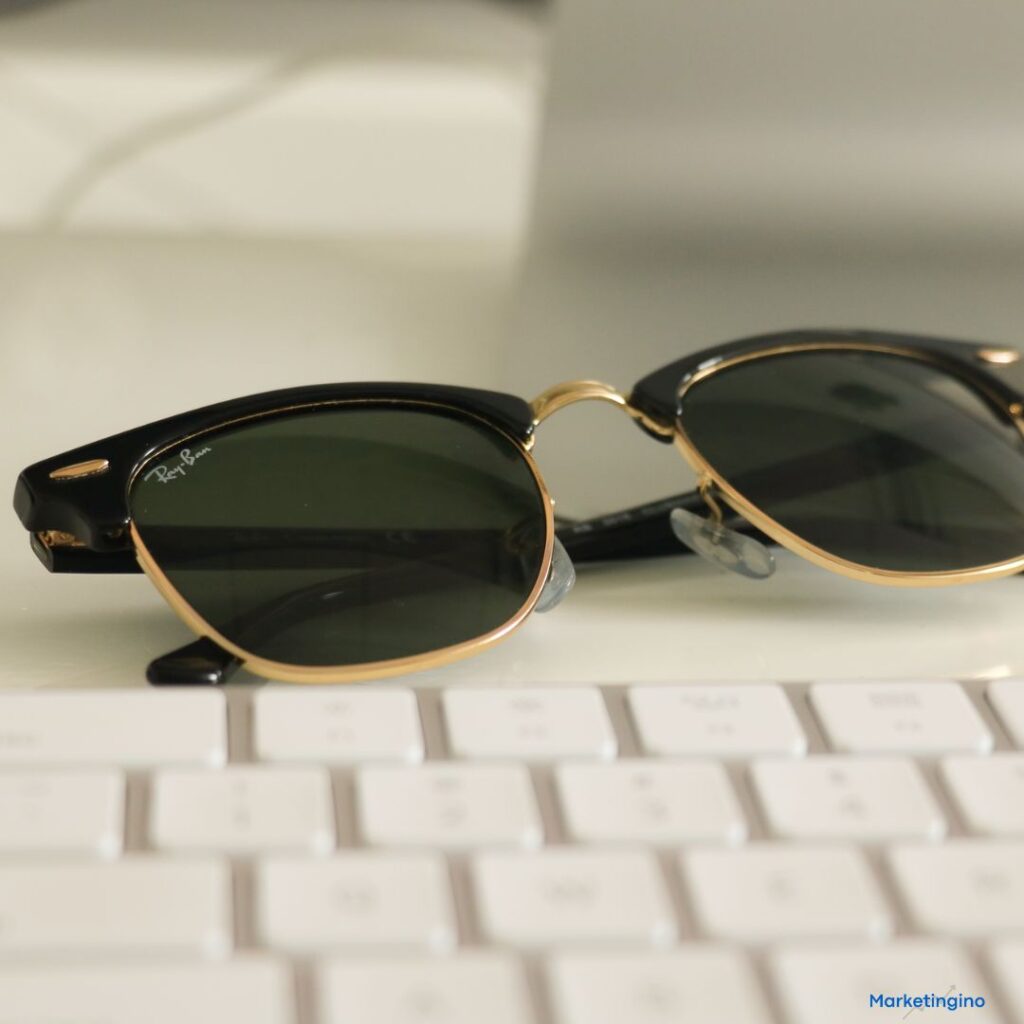Ray-Ban, a brand synonymous with stylish eyewear and iconic design, has maintained its market leadership through a sophisticated and strategic marketing approach. Known for its timeless styles and association with popular culture, Ray-Ban continues to captivate consumers worldwide. Here’s a detailed look at how Ray-Ban markets its brand and sustains its global presence.
Understanding Ray-Ban’s Marketing Strategy
Ray-Ban’s marketing strategy revolves around brand heritage, innovative design, target market identification, and integrated marketing communications. The core elements of Ray-Ban’s marketing strategy include leveraging iconic styles, embracing digital innovation, and forming strategic partnerships.
Brand Positioning
Ray-Ban positions itself as a timeless and iconic eyewear brand that combines style, functionality, and quality. The brand emphasizes its rich heritage and association with cultural and fashion trends, appealing to a wide range of consumers.
Key Tactics:
- Iconic Imagery: Ray-Ban’s marketing campaigns often feature high-concept visuals that highlight its classic designs and cultural relevance.
- Memorable Taglines: Using taglines such as “Genuine Since 1937” to reinforce the brand’s longstanding heritage and authenticity.
Target Market Identification
Ray-Ban targets a diverse demographic, including fashion-conscious individuals, professionals, and celebrities who value quality, style, and timeless design. The brand tailors its messaging to resonate with these groups, emphasizing the blend of classic and contemporary styles.
Key Tactics:
- Market Segmentation: Ray-Ban uses demographic, psychographic, and geographic segmentation to identify and target its core customer base.
- Customer Insights: Continuous market research helps Ray-Ban understand the preferences, behaviors, and aspirations of its target market.
Product Differentiation
Ray-Ban differentiates itself through its commitment to quality craftsmanship, innovative design, and iconic styles. The brand offers a range of eyewear products that cater to different tastes and lifestyles.
Key Tactics:
- Quality and Craftsmanship: Emphasizing the superior quality and craftsmanship of its products, often highlighting the materials and techniques used.
- Innovative Design: Continuously introducing new designs and updating classic styles to set trends in the eyewear industry.
- Iconic Styles: Leveraging its classic styles, such as the Aviator and Wayfarer, which have become cultural icons.
Integrated Marketing Communications
Ray-Ban employs an integrated marketing communications strategy to ensure consistent messaging across all channels, including print, television, digital media, and in-store experiences. This approach helps create a cohesive brand experience for customers.
Key Tactics:
- Digital Marketing: Active engagement on social media platforms, targeted online advertising, and content marketing to reach a wider audience.
- Traditional Advertising: High-profile print ads in fashion magazines, television commercials, and outdoor advertising in strategic locations.
- Event Marketing: Hosting exclusive events, product launches, and pop-up shops to engage directly with customers and the media.
Celebrity Endorsements and Influencer Partnerships
Ray-Ban partners with celebrities and influencers to enhance its brand image and reach a broader audience. These endorsements help to create buzz and build brand credibility.
Key Tactics:
- Celebrity Ambassadors: Collaborations with high-profile personalities from the worlds of fashion, film, and music to promote the brand and its products.
- Influencer Collaborations: Working with influencers who align with Ray-Ban’s brand values to promote products authentically and reach younger audiences.
Customer Engagement and Experience
Ray-Ban focuses on providing an exceptional customer experience, from the initial interaction to after-sales service. The company aims to build long-term relationships with its customers by exceeding their expectations at every touchpoint.
Key Tactics:
- Personalized Communication: Using CRM systems to send personalized messages, offers, and updates to customers.
- Customer Service Excellence: Providing outstanding customer service through well-trained staff and exclusive in-store experiences.
- Loyalty Programs: Offering exclusive benefits and rewards to loyal customers through programs like Ray-Ban Privilege.
Sustainability and Innovation
Ray-Ban is committed to sustainability and innovation, focusing on developing eco-friendly practices and reducing its environmental impact. The brand emphasizes its efforts to lead the eyewear industry towards a greener future.
Key Tactics:
- Sustainable Practices: Implementing sustainable practices in manufacturing, sourcing, and operations.
- Innovative Materials: Using innovative and sustainable materials in the design and production of its products.
- Corporate Social Responsibility: Engaging in various CSR initiatives to support environmental and social causes.
Global Reach and Localization
Ray-Ban has a strong global presence, with retailers and online stores in major markets worldwide. The brand adapts its marketing strategies to local markets while maintaining a consistent global image.
Key Tactics:
- Localized Campaigns: Tailoring marketing campaigns to reflect local cultures, preferences, and trends.
- Global Consistency: Ensuring that the core brand values and messaging remain consistent across all markets.
- Strategic International Expansion: Identifying and entering new markets with high growth potential through strategic investments and partnerships.
Ray-Ban’s marketing strategy is a blend of heritage, innovation, customer engagement, and global reach. By understanding its target market, differentiating its products, and leveraging integrated marketing communications, Ray-Ban has built a strong and loyal customer base. As the eyewear industry evolves, Ray-Ban’s commitment to quality, sustainability, and innovation will ensure its continued success and leadership.




